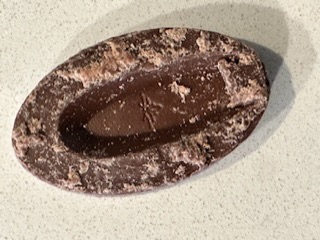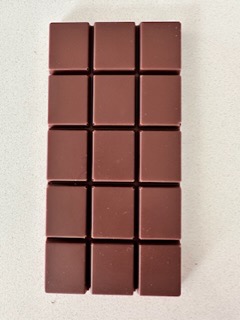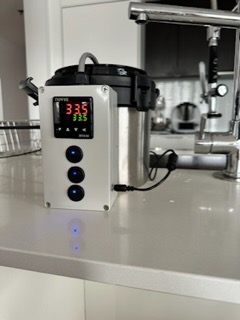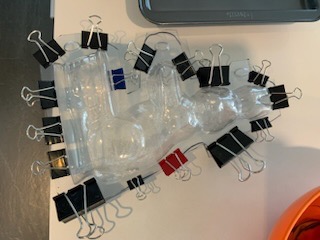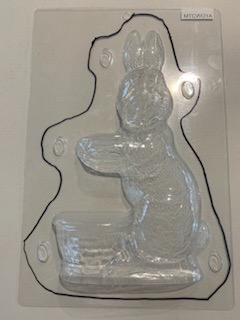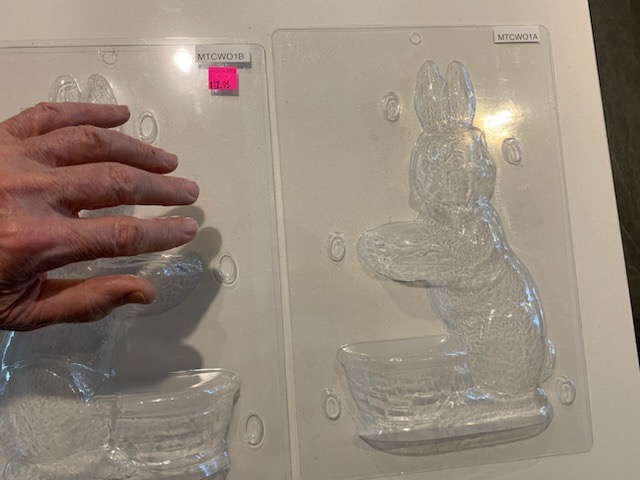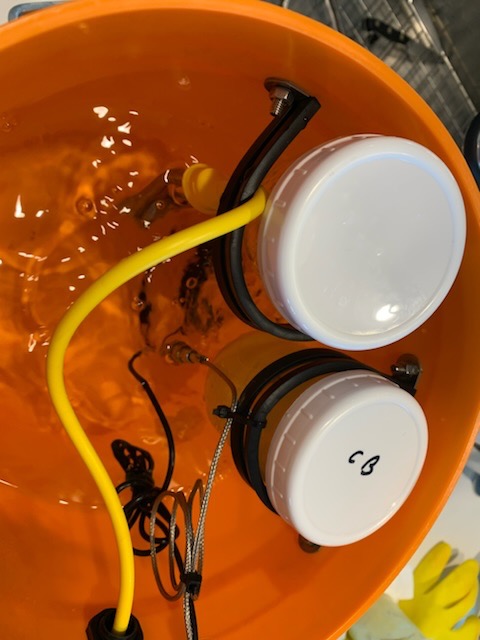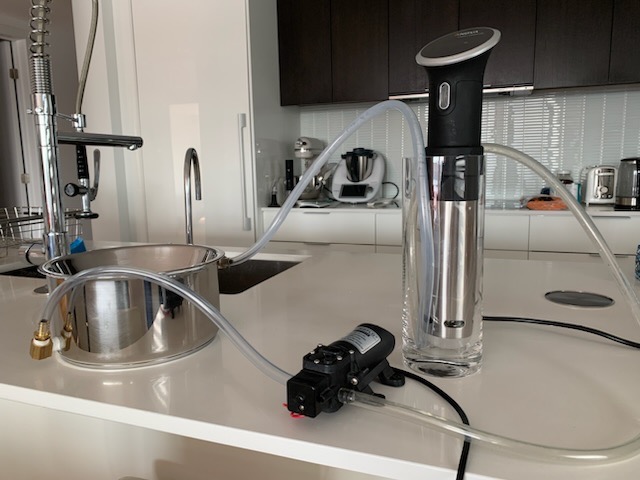
Yulsam
participating member-
Posts
13 -
Joined
-
Last visited
Recent Profile Visitors
The recent visitors block is disabled and is not being shown to other users.
-
I did some experimenting with dodgy looking chocolate I bought a few months ago, that was parted out by the seller in 1 kg bags with a printed label and no expiry date. I put about 150 grams in my tempérer at 33.5C overnight. It was easy to mold, and the final result after cooling was great. . I think that tempering and crystal formation is a function of temperature and time, and if the chocolate is left for a sufficiently long time at the proper temperature, form V crystals will form predominantly. Please correct me if I am wrong.
-
Update - HDtemper is dead. After a few weeks of operation, the GFCI breaker tripped, so I plugged the machine in a regular outlet, and I wasn’t surprised to find the water live at 120 Volts! As I had expected, the heater had shorted to the water, so I went back to what I should have done from the start, running everything at 12 VDC. I also replaced the plastic bucket with a double walled stainless steel tank that I found on ebay, so a 50watt heater @12V is plenty, especially if I prefill the tank with water at close to 33C. The beta version is working beautifully, and when I set the controller at 33.5C, it maintains that temperature without even moving 0.1C. I haven’t decided on a name to replace HDtemper, readers’ suggestions are welcome. I am still waiting on some stainless fixtures that I ordered to hold the different items securely inside the tank. I will make a final report with photos after I get them.
-
Thanks for your tips. I followed Kerry’s advice, trimmed the molds, filled one half with 400 grams, clipped the other half to it and rotated them. Practically no leakage, as I went overboard with the clips. Three bunnies made, and three happy grand kids.
-
I verified the volume of each half mold at 600ml. So a solid fill will be more than 1 kg. Of chocolate. My son and my daughter-in-law would both kill me.
-
Thank you Kerry, great advice. How about trimming the molds to get the clips as close as possible to the edge. Is warming the mold to around 30C before filling it a good idea. I bought some Roxi & Rich colored CB. What temperature should I heat it before applying with a brush ? 34C ?
-
I promised my grand kids some chocolate eggs and Easter gummies for Easter. I’ve already made some eggs, but I bought this big two halves mold, and I do not know where to start. Your help and ideas are greatly appreciated. I would like to work the chocolate on Friday. Thanks
-
After more than 24 hours of continuous operation, with the cover both in place and off, the temperature stayed at 33.6C, and there were very few occasions when it would fall to 33.5C and then return to 33.6C in less than 5 seconds. Setting up the PID controller took more than the time to build the machine. The controller has an auto tune function that supposedly finds the best set of variables to control the heating to get the machine running at the preset temperature. I tried implementing it several times, but most of the time the controller would start auto tuning, and stay there indefinitely until I turned it off. On a couple of occasions it would finish tuning and switch to automatic mode, but it would oscillate around the preset temperature by about +/- 1C. With trial and error, I was able to finally find a good set of variables to maintain the preset temperature. The picture shows the components inside the bucket. The submersible 120volt heater (yellow cable) is the most critical component, as it is two wire (hot and neutral) with no ground, so in case of an electric fault, the water could become electrically live. I honestly do not know how Amazon gets away with selling this stuff. I have connected a ground wire to the water, and run the machine from a gfci breaker, so it will trip in case of a fault. I also turn the heater off before I put my hand in the water. You can also see the temperature sensor(silver color) and the blurred black circulating pump at the bottom. This is a 5volt pump, so no problem there. I have two supports for mason jars, but I will ultimately remove one, and replace it with a different support to hold up to 9 colored CB tubes. I did a trial removing one of the jars and letting it cool down to room temperature. I put it back in the warmed up machine, and after 3 hours the CB had the consistency of soft mayonnaise. I haven’t tried tempering a batch of chocolate, but I am confident that it will work. The mason jar is easy to wipe dry, as the cover and part of the jar are above the water line. I have been looking for a stainless steel jar with a water tight cover, which will lower the time needed to get the CB at the working temperature. The pros of this machine: 1. The low cost of the components. For me as a retired engineer, my time is free, and the total cost is limited to that of the components. I enjoyed working on this project, and that was an additional benefit. On two consecutive nights I woke up at 3 am and went back to work. 2. Water heats the jar and the CB in a short time, and with a suitable s/s jar, it should get even faster. That negates the need to keep the machine running continuously. On the other hand I can think of two cons: 1. Safety: I am looking to replace the heater with a 12 or 24volt one. In that case the 120volt would not be needed at all, and the machine will use a low voltage power supply. 2. Running a water bucket for a long time at 33 degrees is calling for mold to grow in the tank. I have added bleach to a concentration of 20ppm, and this would require testing the water regularly to maintain the chlorine level. This is a work in progress, and I will keep you posted on further developments.
-
I am dedicating this working chocolate tempering machine to Kerry Beal. Although I have not met Kerry nor spoken with her, I have learnt way more from her than any other source of information re chocolate making, including a three day course that cost me more than her Eztemper. Note to the readers: Although this is a low cost alternative machine that works, I do not recommend it and will not give design or construction details for one simple reason. This machine, as built, comes very close to using a hair dryer in a bathtub full of water, and will never get a CSA, UL or CE certification. As an electrical engineer who has made mistakes, some of them costly, in my professional work, I know how to protect myself and those around me from the two dangers of electricity, Electrocution and Fire. I strongly advise you to purchase an EZtemper if your business plan or your financial situation justifies it. It is designed and built as a low voltage machine, making it is as safe and even safer than the iPhone in your pocket. I need to warm up coconut butter to a pre-established temperature around 33.5 C, and maintain it at that temperature. Since I do chocolate once a week or every two weeks, I do not want to keep the machine running, so I want a machine that will get my CB at working temperature in a few hours. I did some initial tests with CB vacuum packed in a pouch and warmed up in a sous vide water bath. It works, but it is quite messy. At the same time, I built different prototypes of chocolate melters using circulated warm water pumped from a small tank maintained at constant temperatures by my Anova. This will be the subject of a second post, and I will give full details on building the melter for about 100$ plus the cost of an Anova or similar machine. I decided to use water to keep the CB warm for two reasons. Water is an excellent heat transfer medium compared to air, so the warming up process would be faster. It also has a much higher heat storage capacity, which makes it easier to to control and maintain its temperature. The machine is simply a 4 litre plastic bucket from Home Depot. Inside there is a cheap 120 V submersible water heater, a small water recirculating pump that keeps the temperature uniform inside the bucket, and two supports for 250 ml. Mason jars that keep the upper 1/3 of the jar above water level. To be continued….
-
Belcolade is in the same price range as Barry Callebaut.
-
Belcolade is in the same Does Belcolade show the fluidity drops like Callebaut or something similar. There was nothing on the Valrhona bag.
-
I started my chocolate experience with a 3 day course at The Chocolate Academy in Montreal a couple of months ago. Since then, I have used Barry-Callebaut products exclusively: 811, 823, W2 and RB1 from Callebaut, and Alunga, Inaya and Alto from Barry. I am tempering with Mycryo, and have had quite good results with snap, gloss, and texture. I received a 3 kg bag of Valrhona Bahibé milk chocolate for my birthday last week. I decided to mold a few bars of this Valrhona, and compare the results with Alunga bars produced under the same conditions. I use a melter that I built from two stainless pots welded together, with a pump circulating water into the enclosed space between the two pots. I use my Anova to maintain the water at a constant temperature. The setup allows me to change the temperature in a few seconds by diverting the return water stream to the sink, and filling the Anova jar with hot or cold water from the sink faucet. I found a major difference in the workability of the chocolates from Barry and Valrhona. After adding Mycryo at 32C, and letting it cool to 29C, Alunga would start firming up, and leaves a short working time. On the other hand, Bahibé was very fluid down to 27C. At that point I decided to mold telling myself that the chocolate is probably bad, despite having a September ‘22 production date. I put all the bars for about 10 minutes in the fridge, and to my surprise everything un molded with ease, and both products had the same snap and finish. Afterwards, we did a blind tasting, and the consensus was in favor of the Valrhona, both taste and texture. However after comparing costs at 43$ vs 17$ per kg, everybody agreed that there is not that much additional value, especially if we are not doing comparative tasting. I will use the Valrhona for work that needs extended time, like intricate molds. I am presently building a pot that will hold cocoa Butter at a constant temperature, to replace Mycryo as a seeding agent. It is based on Kerry’s outstanding work with Eztemper. I’ll post my results when (and if) I have something that works.
-
Thanks to all for the warm welcome. @elsied: I’m afraid I’ve never been to that patisserie. It looks interesting, definitely worth a visit. @kerry: That was at the Barry Callebaut academy. Btw I learned a lot from your Eztemper topic, more than what I learned there 😏 Is the topic closed now?
-
Bonjour à tous et toutes, Born (1950) and raised in Beirut, got my engineering master’s from Stanford in ‘73, lived the first half of my life in Europe and the Middle East, and the second half in Montreal. I am a curious person who likes to try and learn new things. I started taking apart stuff at a very young age, and always got in trouble because I could not put them back together. Mother bought us a 1960 Encyclopedia Britannica, and it was my favorite reading for many years. Whenever I got interested in something, I would start reading about it, and the next step would be to take courses and pass exams. Over the years I have taken flying lessons, boating lessons, a welding course, several cooking courses, and my last venture was a three day chocolate course last month. Playing with chocolate is my favorite pastime now, and I found the Eztemper topic and learned a lot from it. I hope i will be able to post and ask questions soon. I am amazed by the amount of knowledge available here.

